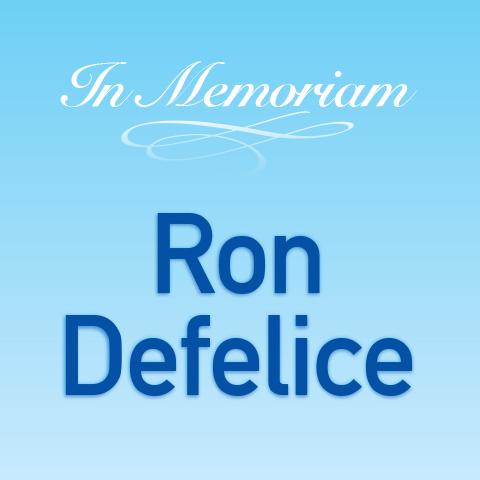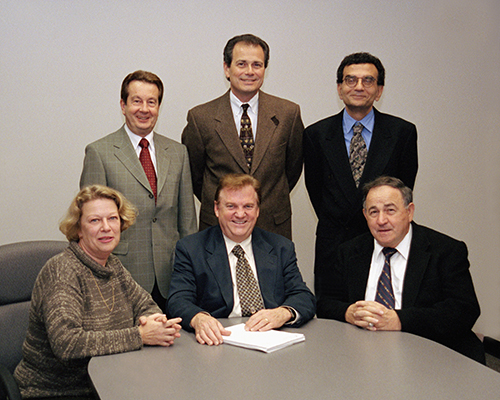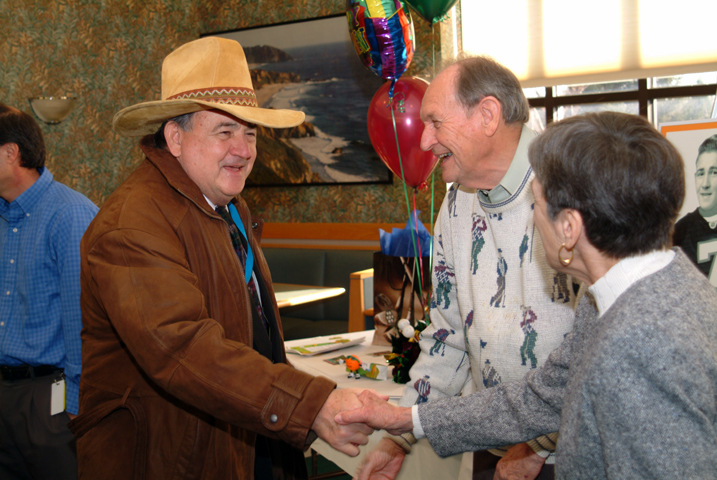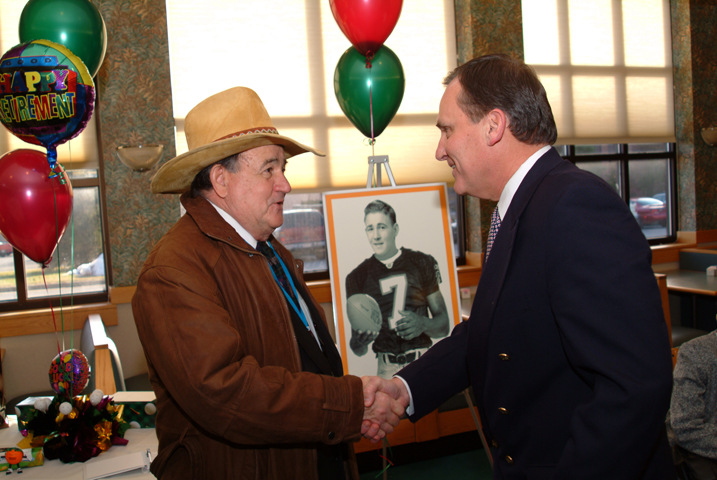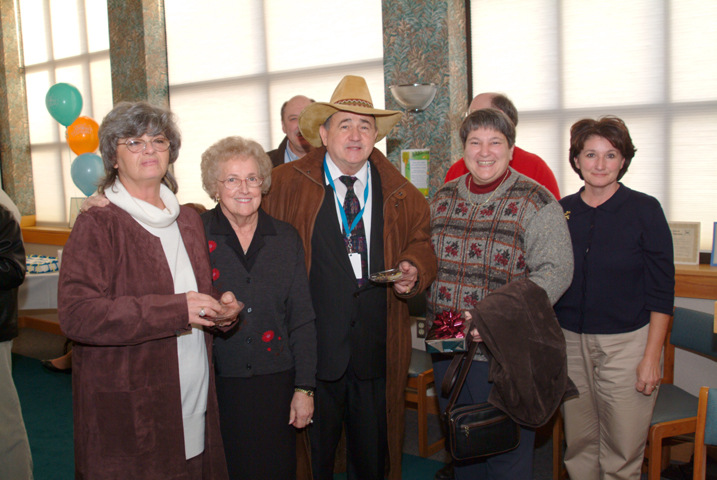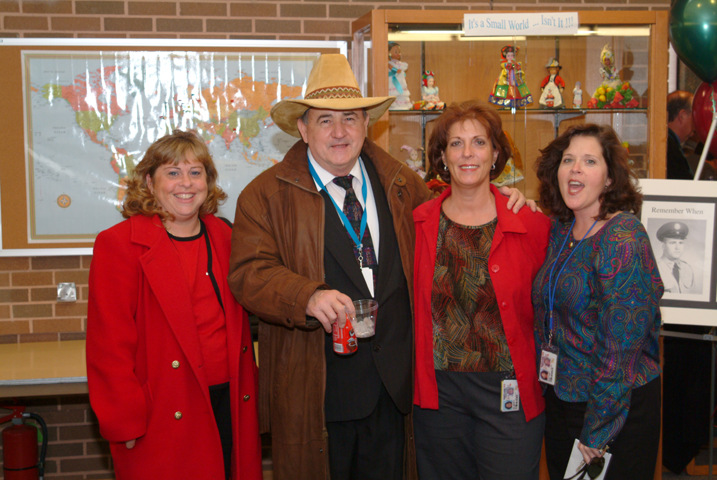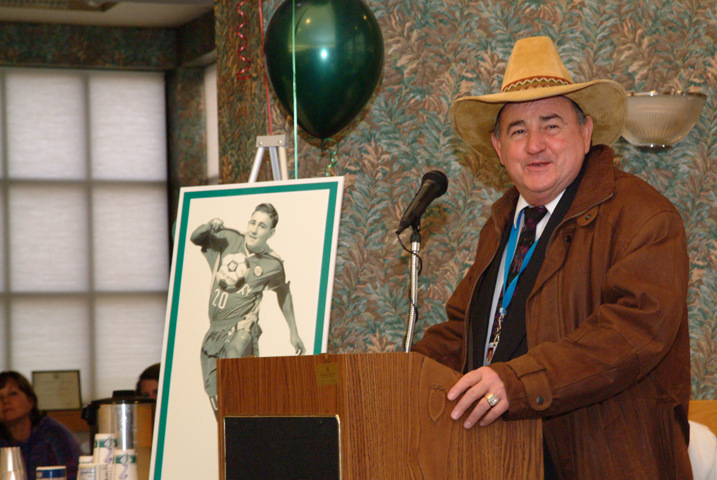Editor's note: Ron Defelice, a 42-year employee of the National Cancer Institute at Frederick and the facility's first Contracting Officer, passed away on December 21, 2018. You can read his obituary here. For the Poster, we’ve chosen to remember his invaluable contribution to the cancer research community.
The year was 1969.
President Nixon had just issued a presidential directive stating that a portion of Fort Detrick would be ceded to the National Cancer Institute to aid in the war on cancer, and the new NCI at Frederick needed a contracting officer.
A young Ron Defelice approached the head of contracting, Carl Fretts, and asked to be considered for the position.
“Now, Carl didn’t even know Ron,” said Dennis Dougherty, former FNL employee and longtime friend of Ron. “I mean, he knew his name, but he didn’t know anything much about him. Carl was reluctant to do that, but Ron was persuasive. So, Carl put him in that position, and obviously he never regretted that decision and never looked back, as Ron did a phenomenal job.”
The presidential directive stated that the facility would operate as a federally funded research and development center (FFRDC). At the time, there was no precedent for this type of contract; there were none in the NCI, the National Institutes of Health, or the Department of Health and Human Services.
So Ron had to learn, largely on his own, how to set up an FFRDC.
First, he had to negotiate the transfer of the land, buildings, and activities from the Army to the NCI. He also had to draft an agreement between the Army and the NCI regarding the operation of the NCI’s facility within the Army base that covered, among other things, access to the fort, security, and necessities such as water, sewer, and electricity.
Once the contract was set up, Ron worked closely with the project officer, who was responsible for the projects and the science, to ensure that everything was done according to the contract.
“He was sympathetic to [the] contractor’s interest as well as the government’s, and he had a very balanced approach to managing the contract from the protection of the taxpayer to the interest of the contractor trying to do the job,” said Dougherty. “There wasn’t anyone who worked with Ron or came in contact with him who didn’t immediately understand that he was a people person. He cared about people. And he would go out of his way to help people that he barely knew. And not just in work situations but in life situations, as well.”
Craig Reynolds, who came to the Frederick National Laboratory in the early 2000s as a project officer, worked closely with Ron for many years. What truly set Ron apart, he said, was his belief that a contracting officer couldn’t fulfill his obligation to the scientific staff without really understanding their work.
“We spent many, many evenings just talking about the science so that he really could get not just a layman’s understanding, but a good understanding of what it was that people wanted to do at Frederick,” reminisced Reynolds. “And because he was able to understand [the science], I think he was able to provide a kind of service to the people that’s very unusual for a contracting officer.”
Perhaps Ron’s best quality, though, was his fairness.
“Ron felt that it was important,” said Reynolds, “in this kind of contract, for it to work as appropriately and effectively as possible, that the people who were providing the oversight, in his case as the contracting officer providing oversight, had to really be very fair and impartial on both sides.”
This made him beloved by both government and contractor employees and inspired the creation of the yearly Defelice Cup. When Ron retired, his coworkers wanted to thank him and commemorate his time here. As Ron was an avid golfer who had helped establish the NCI at Frederick Golf League, Dougherty proposed a friendly golf tournament, modeled after the Ryder Cup, that pitted government employees against contractor employees.
“That competition started in, I want to say 1997 or thereabouts,” said Dougherty, “but it went for about six years and it was very intense and looked forward to every year by the contractor and the government. When he retired, Ron tried to get me to stop the competition or at least change the name, he didn’t want it to be called the Defelice Cup because he didn’t think he deserved that kind of honor. But nobody would think about changing the title, because there was such respect for him.”
There hasn’t been a Defelice Cup in several years; two years ago, the event was cancelled due to the weather and was never rescheduled. At the time, the government had won five times to the contractor’s three.
Even as Ron got older, “like the Master’s,” said Reynolds, “he would come out and hit the ceremonial first drive. He enjoyed being there to see everyone who played and talk about old times.”
Ron spent a lot of time with his wife and two sons, and aside from golf, he also enjoyed monthly poker nights with his friends, an event that dated back to the 1970s. After his final poker night two months ago, he described the regular games as “one of the most pleasant things he had done in his life.”
Ron’s legacy at the Frederick National Laboratory is foundational: he helped set up the framework for the facility we know and enjoy today. This one extraordinary action had a significant effect on the larger community, rippling outward to affect thousands of jobs and lives.
Under Ron’s guidance, the contract grew from a few million dollars to hundreds of millions of dollars and encompassed almost 3,000 employees. It was the largest research and development contract in the Department of Health and Human Services, and it remains so today.
“In just one period of time,’ said Reynolds, “one career while he was there, he really did help to lead that whole effort to become something pretty special.”


